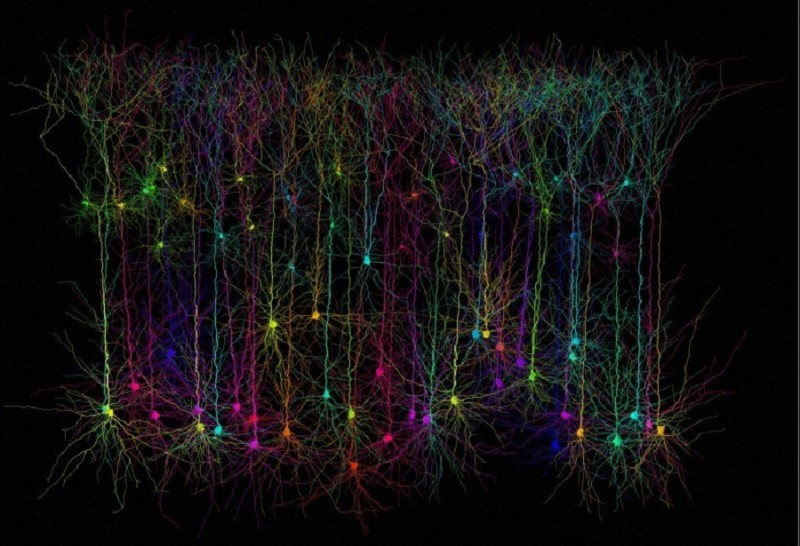A new study has come out that uses the Glasser parcellation! In the study entitled, Brain connectivity at rest predicts individual differences in normative activity during movie watching, the researchers examined how people’s resting-state functional connectivity between brain areas compared to the mean of the test subject population, and how this related to activations during the watching of movies. This study is interesting because it peers inside the brain of the audience members during the movie, analyzes how they interpret the movie scenes, and then how these interpretative brain patterns compare between audience members.
The researchers open up their introduction with a hat-tip to neurotypical groupthink that the Borg collective would approve of:
“The ability to interpret information from the outside world in a manner similar to one’s conspecifics is critical to healthy human behavior.“
As iconoclastic neuromythographers, we pass over this assertion about the sweet homogenizing nectar of normativity and get on with our subversive reinterpretation work. Principal component analysis found two main components that were centered on areas left FEF (frontal eye field) and left TPOJ2 (temporoparietaloccipital junction area 2).
FEF (frontal eye field) is assigned the archetype Cantor, named after Georg Cantor, the founder of set theory in mathematics. FEF has a pretty general role in scene tracking of objects in a scene, sentence, or mathematical expression.
TPOJ2 (VERB-OBJECT-SCHEMAS) is an unarchetyped area responsible for breaking down sentences and scenes in terms of what is happening to what or whom. With respect to sentence structure, TPOJ2 is focused on verb-predicates; I think that this corresponds to the participle form of verb conjugations (in English, verbs that end in -ing). (If this inspires just the right archetype, please do respond in the comments!)
Further analysis of the inputs and outputs of these regions found two networks centered in TPOJ2 and its neighbor PHT, and IFJa and its neighbor area 44:

Left Area 44 (Vac): area 44 mediates the smooth interpretation of speech. Vac is the Hindu personification of speech.
Left Area 44d (Orwell): area 44d is the neural correlate of rote language learning, preferred phrases, and, at its most concerning extreme, indoctrination. Education makes a significant impression upon the phrasing preferences of this area. 44d is assigned Orwell as a cautionary archetype of closed-minded indoctrination.
Left Area 44v (Wittgenstein (early)): area 44v is the neural correlate of fluid hierarchical sentence construction. Damage to this area causes stuttering. Early Ludwig Wittgenstein wrote Tractatus, a philosophy masterpiece with an extensive hierarchical proposition structure.
Left IFJa: (Kenny Rogers): left IFJa is central to switching to the appropriate response when a cue presents itself. This area has been assigned Kenny Rogers, in tribute to his famous song recording, The Gambler, about switching responses based on the situation:
You've got to know when to hold 'em Know when to fold 'em Know when to walk away And know when to run...
In the present movie-watching study, left area 44 shows up because of the semantic parsing of dialog. Left IFJa centrality may reflect anticipation of movie plot points, and empathic experience of vicarious choices one might make on behalf of the characters.

TPOJ2 was discussed earlier. Left PHT (Ptolemy) stores knowledge of geography. Ptolemy was the first geographer. The coactivation of TPOJ2 (what happened to what) and PHT (in what places) feels like a natural interpretation of what happens in the mind during the course of watching a movie.
Conclusion
The most interesting interpretation of this study (to me) is that the common experience of a movie across moviegoers may be related to the common linguistic education that moviegoers have received; an education imprinted upon area 44 and IFJa. This has implications for why certain audiences receive movies differently than others. More generally, it may explain why people do not share the same facts after watching the same video. Examining the evidence from this perspective, however, requires one to disagree with the researchers’ opening statement that “the ability to interpret information from the outside world in a manner similar to one’s conspecifics is critical to healthy human behavior.”




